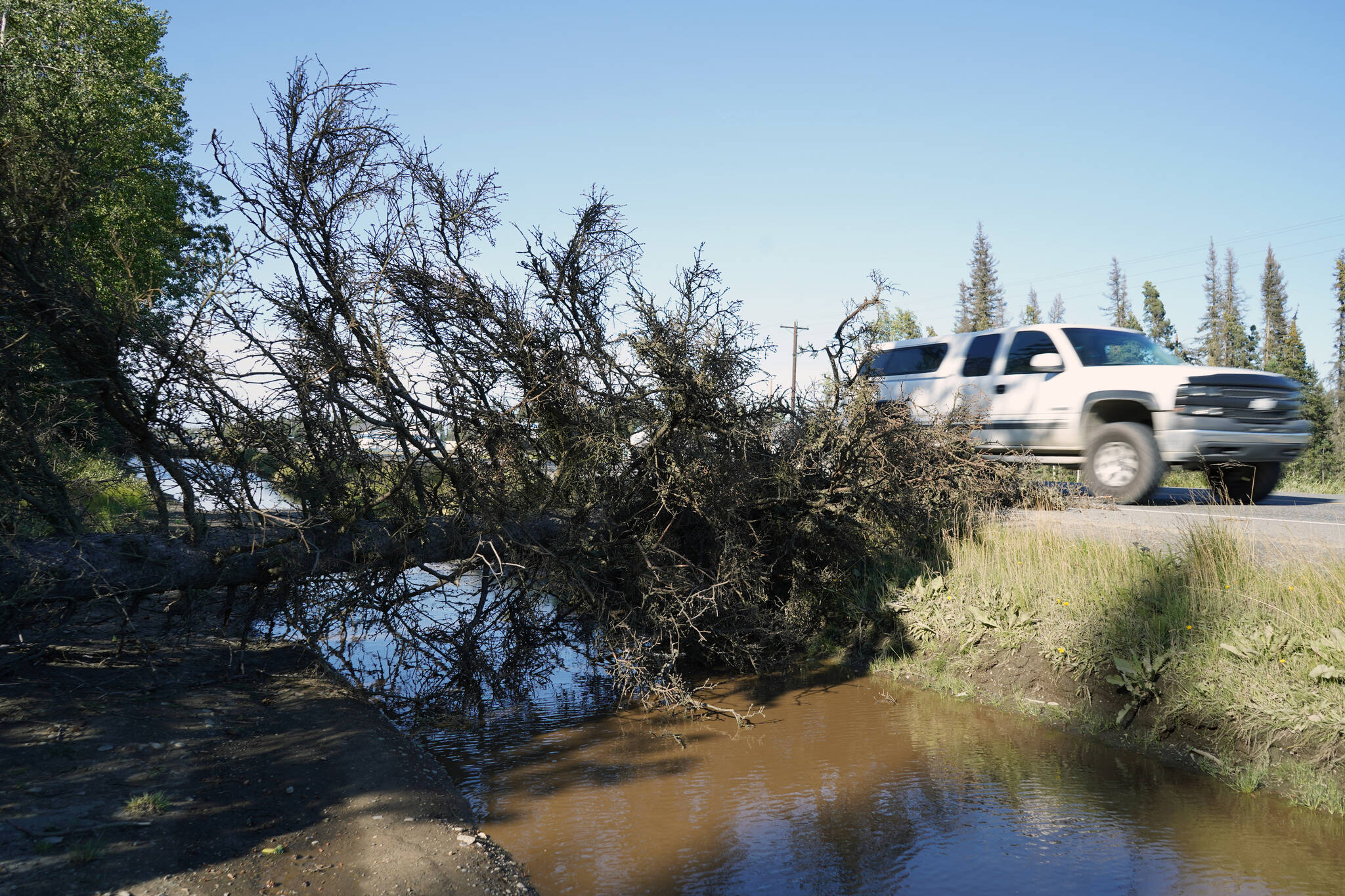Grant funds and a new arrangement with the Kenai Peninsula Borough will empower Homer Electric Association to “aggressively” tackle the issue of dead trees falling onto power lines and mitigate the risk of both power outages and fires.
During their May 21 meeting, the Kenai Peninsula Borough Assembly passed a resolution authorizing Kenai Peninsula Borough Mayor Peter Micciche to enter into an agreement with HEA intended to allow for more proactive mitigation of “danger trees” — those trees that are at risk of falling into utility infrastructure like power lines based on size, condition and location.
A memo included with the resolution says that the borough and HEA share common goals — “keeping communities safe and resilient to power disruption and reducing wildfire risks.” The draft agreement describes an arrangement where HEA will be permitted to enter borough land outside of its right of way to mitigate danger trees with simplified noticing requirements.
The draft document says that HEA will have permission to enter borough land and the borough’s right of way. Borough Land Management Officer Aaron Hughes said during the meeting that HEA will have “standing authorization” to conduct mitigation.
The utility currently mitigates “to the maximum extent that we are allowed to by law,” HEA Chief Strategy Officer Keriann Baker said Friday, but they cannot do anything about trees outside of their legal area without permission. The new borough arrangement will let them enter more areas, and the utility has a voluntary program for private landowners to report trees at-risk of falling into power lines and have them felled by the utility.
Baker credited Micciche with leading the charge to have the arrangement made, recognizing the trees as “a big issue,” and said that he and the borough also helped to acquire grant funding for that mitigation work. A grant of $1.5 million will come from the borough to address the issue.
That grant funding is in addition to another $2.6 million awarded by the U.S. Forest Service intended to provide for wildfire mitigation. A release from the forest service says that the grant, a Community Wildfire Defense Grant, will “address the growing risk associated with excessive fast-growth trees, vegetation, and spruce beetle-affected trees.”
Baker said that the risk of fire is real, something that “keeps us up at night.” That’s a lesser known danger of the dead trees that the utility is planning a significant messaging campaign for this summer. A dead tree hitting a line during a hot, dry summer can cause a serious fire.
“We really don’t want something like that on our service territory.”
Both grants, totaling over $4 million, will allow HEA to “do more,” Baker said. That means mitigating trees along a greater section of line, reducing the risk of outages and fires.
The utility has always been able to clear dead trees from its utility right of way, Baker said, which extends 10 feet on either side of the power lines. The entire right of way, along over 3,000 miles of line, is cleared once every seven years.
What has become an issue recently is trees falling on lines from outside of the right of way, from government or private property that they cannot access without permission. This is especially true, she said, on the north end of the utilities network, including around Kenai and Soldotna.
The number of unplanned outages each year has increased from around 600 in 2020 to more than 1,000 in 2023 — and an increasing amount of those outages are caused by trees falling from outside the right of way.
In 2020, 16% of unplanned outages were caused by trees falling from outside the right of way. In 2023, 48% of unplanned outages, 558 total, were caused by those trees. Exacerbating the issue is that the majority of those outages are happening in the coldest months of the year, between September and December.
During the strongest windstorms, Baker said crews at times return to an area repeatedly as different trees fall on the same lines — “the trees often fall into the line faster than the linemen can remove them.”
“It’s a very big problem,” Baker said. “Our mandate is to keep the lights on.”
Baker said that private landowners know their property best and should look at the vegetation on their land and consider how it might play into any fire situation. State resource Firewise, available through forestry.alaska.gov, can help identify dangers and take personal steps to protect from fires.
If there are large trees, tall and dead, that look like they could fall into a power line, Baker said HEA encourages property owners to contact the utility to come out and look — “if it is a hazard tree or a danger, we’ll take it down.”
Baker said the issue of danger trees is one that the utility is continuing to explore options to tackle. She said that state legislators, including Rep. Sarah Vance; R-Homer, Rep. Ben Carpenter, R-Nikiski; and Rep. Justin Ruffridge, R-Soldotna, all worked closely with the utility to pursue legislative protections that didn’t ultimately pass.
For more information about Homer Electric Association, its right of way maintenance and tree safety, visit homerelectric.com/safety.
Reach reporter Jake Dye at jacob.dye@peninsulaclarion.com.


